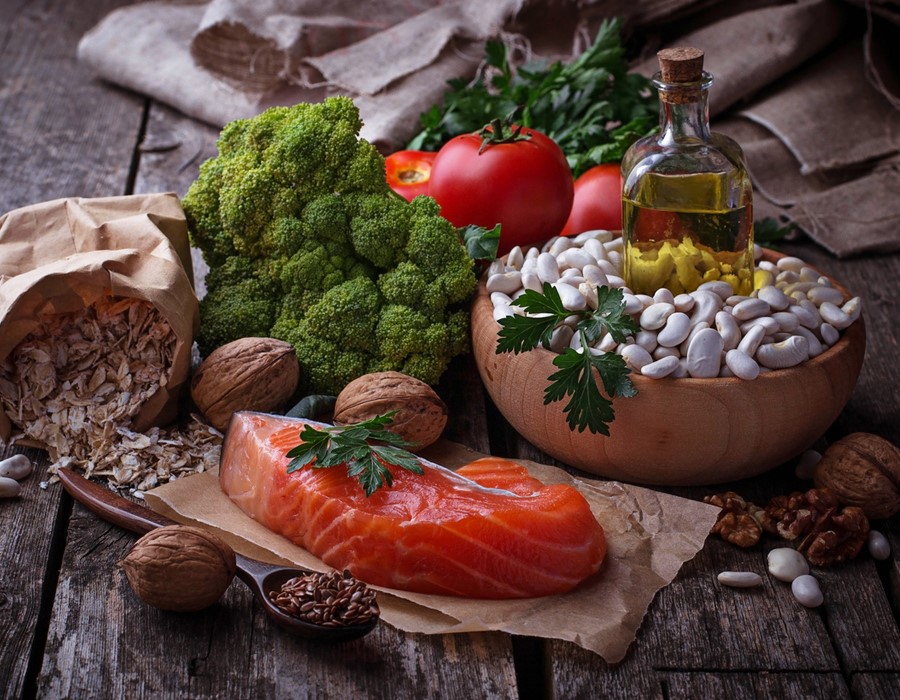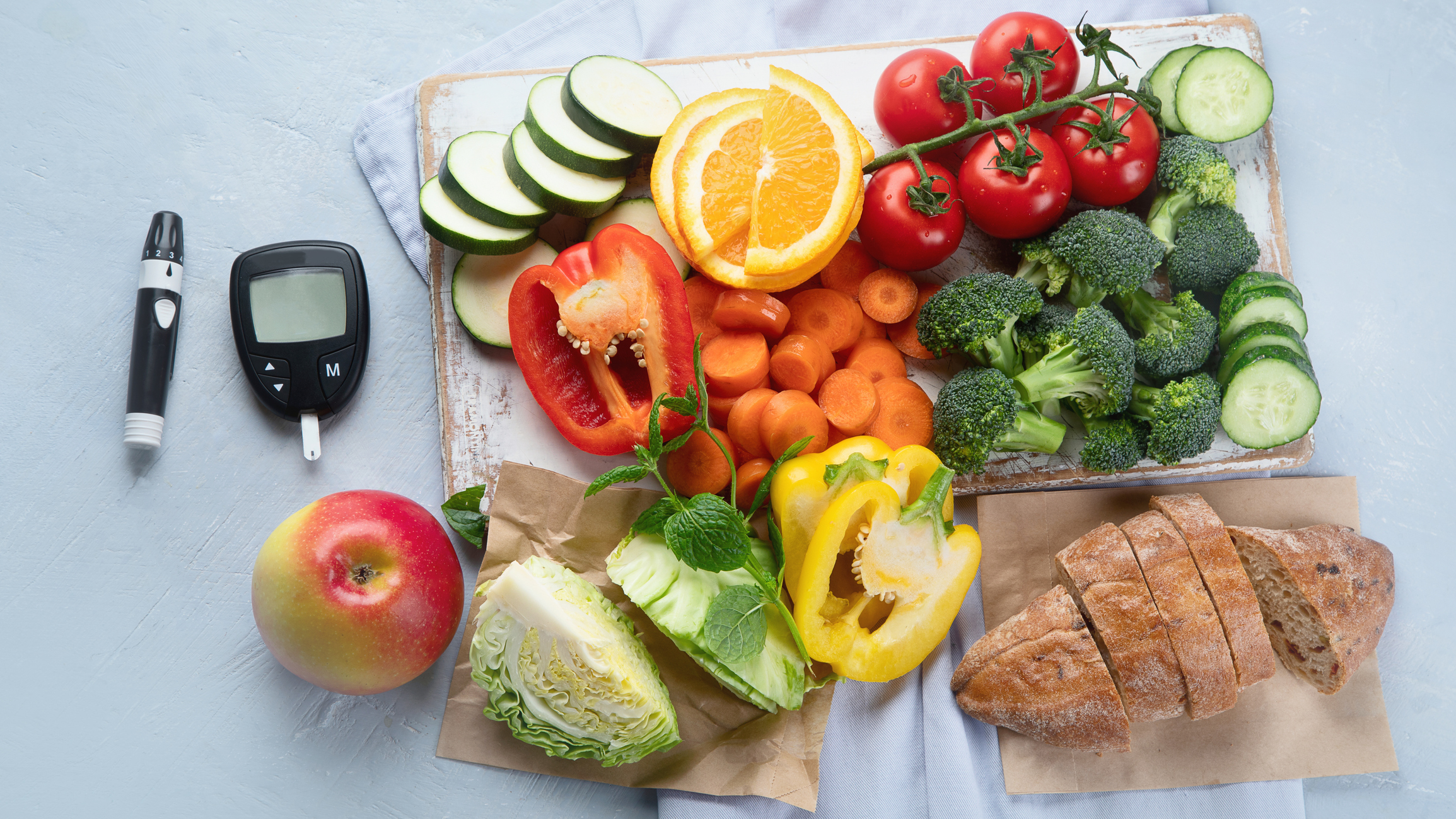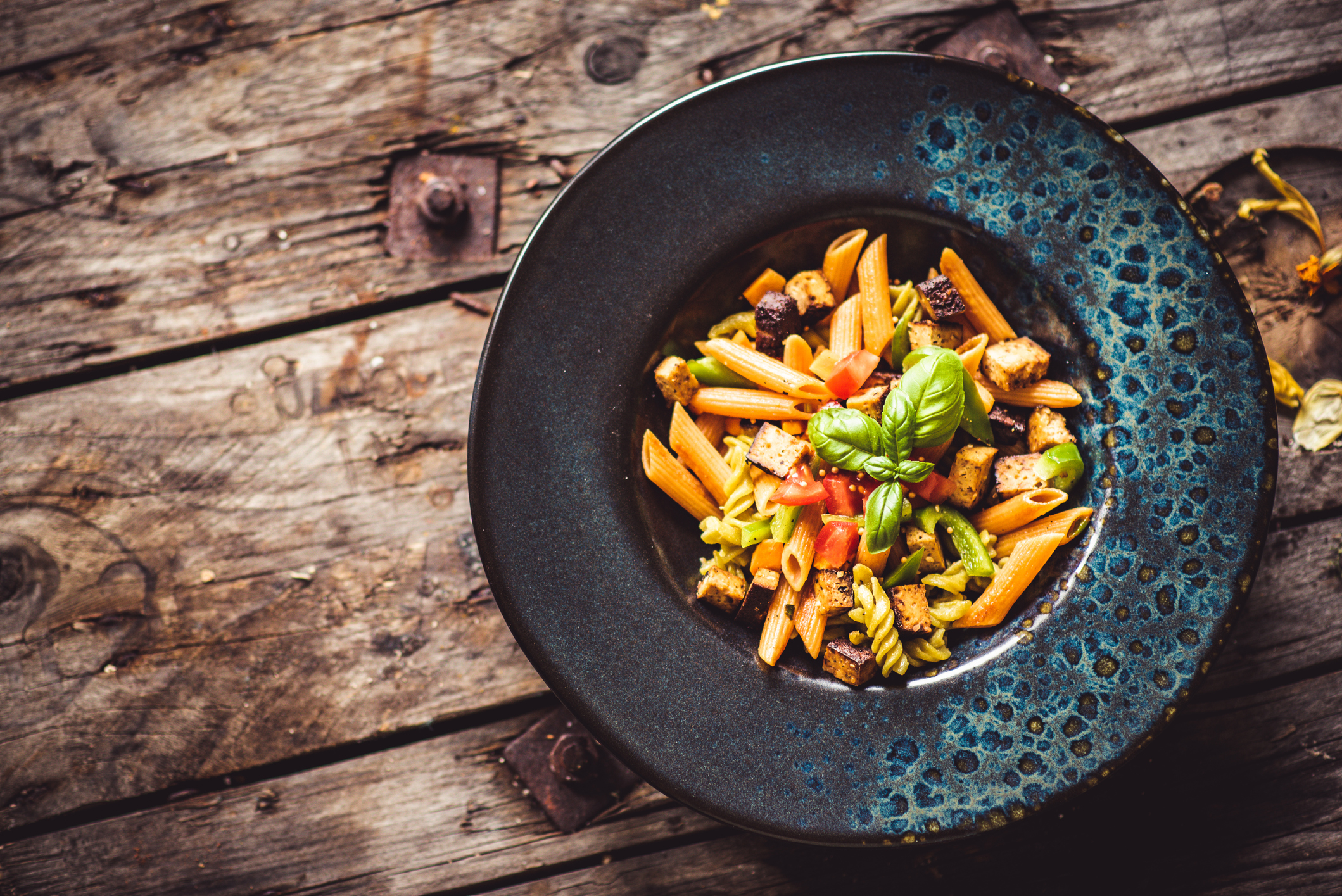






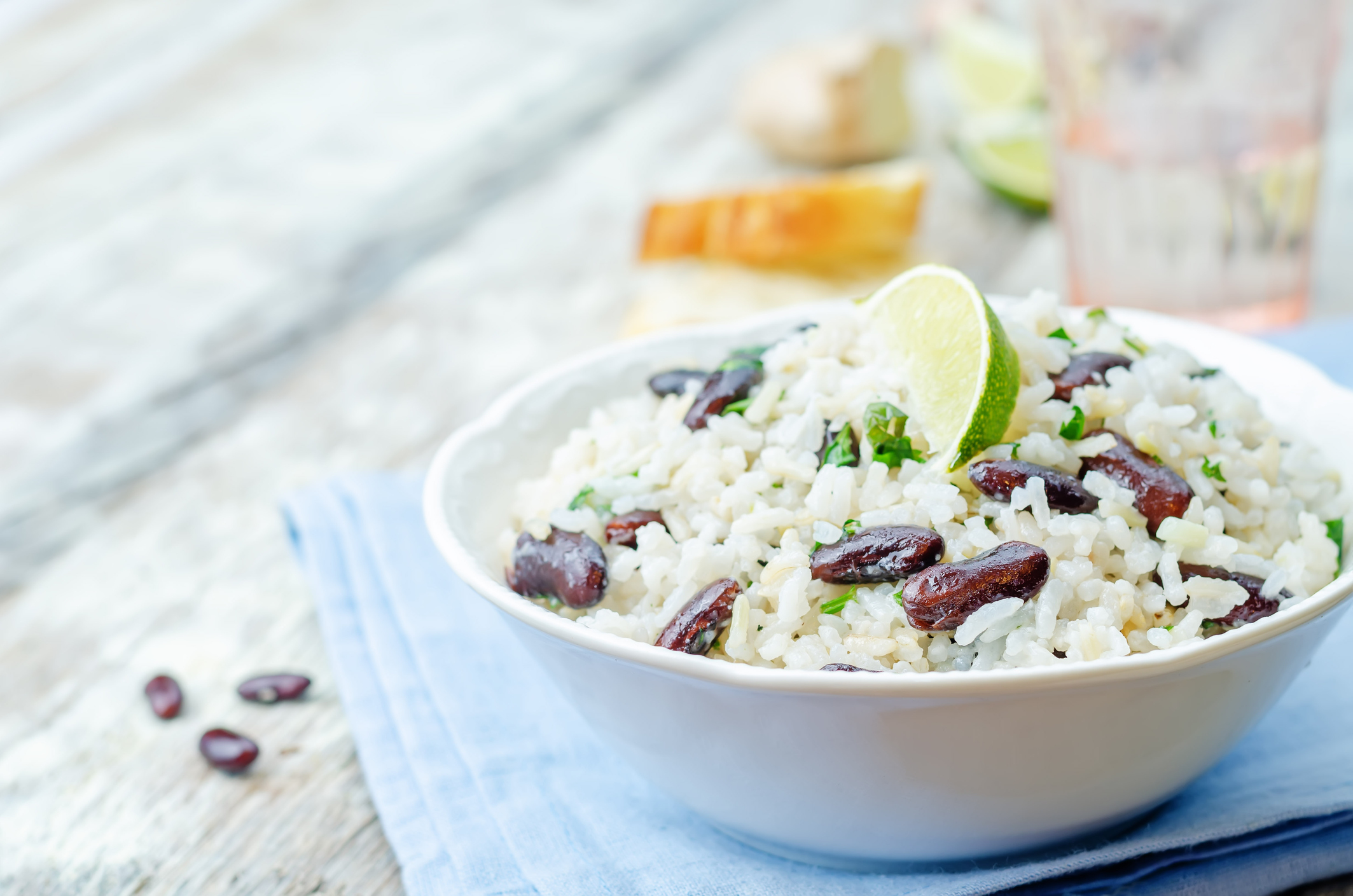
Can Diabetics Eat Beans and Rice?


Table of Contents
- The Crucial Connection Between Diet and Diabetes
- A Deeper Look into How Food Affects Blood Sugar Levels
- The Imperative of a Balanced Diet in Diabetes Management
- Exploring the Role of Beans in a Diabetic Diet
- The Incredible Nutritional Value of Beans
- The Positive Impact of Beans on Blood Sugar Levels
- The Role of Rice in a Diabetic Diet
- A Detailed Look at the Nutritional Value of Rice
- Understanding How Rice Impacts Blood Sugar Levels
- SugarMD Advance Glucose Support
- Combining Beans and Rice in a Diabetic Diet: A Comprehensive Guide
- Unlocking the Power of Food Combinations
- Fiber: The Key Player in Blood Sugar Control
- Conclusion
- FAQs
- 1. Are all types of beans good for a diabetic diet?
- 2. What type of rice is best for people with diabetes?
- 3. Can I eat beans and rice at every meal?
- 4. How can I incorporate beans and rice into my diet?
- 5. Are there other foods that are good for diabetes?
- About The Author
Have you ever wondered, "can diabetics eat beans and rice?" If you're among the millions of people worldwide managing diabetes, it's crucial to know how these staple foods can impact your health. Today, we dive deep into the role of beans and rice in a diabetic's diet.
The Crucial Connection Between Diet and Diabetes
The diet you follow and the foods you choose to consume play a monumental role in managing your diabetes and maintaining balanced blood sugar levels. To begin, let's unpack how different food groups can impact your glucose levels.
A Deeper Look into How Food Affects Blood Sugar Levels
The food you consume undergoes digestion and is ultimately broken down into various nutrients that your body uses for energy and growth. Carbohydrates, a critical part of your diet, are broken down into sugars, including glucose which enters your bloodstream. Therefore, consuming carbohydrates directly influences your blood sugar levels.
Every food has a unique combination of carbohydrate, protein and fat and these nutrients interact with your body differently. While proteins and fats have a negligible direct impact on blood glucose levels, carbohydrates can cause significant spikes. Different types of carbohydrates, such as sugars, starches and fibers, also affect blood sugar differently.
Simple carbohydrates (sugars) often cause a swift rise in glucose levels, while complex carbohydrates (starches and fibers) lead to a more gradual increase. Understanding the intricacies of how different foods and nutrients influence blood sugar levels is essential for effective diabetes management.
It's not just about the quantity of food consumed, but also the quality, type and timing of consumption. By making informed dietary choices, you can control the natural post-meal rise in blood sugar levels and prevent any unwanted spikes or crashes.
The Imperative of a Balanced Diet in Diabetes Management
A balanced diet plays a pivotal role in managing diabetes. Such a diet provides all the necessary nutrients in appropriate amounts and helps maintain a healthy weight - a crucial factor in diabetes management. In a balanced diet, lean proteins should feature prominently. Proteins take longer to digest and help maintain a sense of satiety, thus controlling your overall calorie intake. Whole grains are another essential component.
They are packed with fiber that slows the digestion process and prevents a sudden rise in blood sugar levels. A variety of fruits and vegetables, preferably in their raw form or lightly cooked to retain their nutritional value, should also be included.
They provide essential vitamins, minerals, fiber and antioxidants, contributing to overall health and helping to manage blood glucose levels. Moreover, it's beneficial to include healthy fats in moderation, such as those from avocados, nuts, seeds and olive oil, as they have minimal impact on blood sugar levels.
Exploring the Role of Beans in a Diabetic Diet
Beans, often overlooked in standard diets, are nutritional powerhouses and particularly beneficial for people managing diabetes.
The Incredible Nutritional Value of Beans
Packed to the brim with nutrients, beans are a rich source of dietary fiber and high-quality protein. The fiber in beans, particularly soluble fiber, slows down digestion and absorption of carbohydrates, contributing to a more gradual rise in post-meal blood sugar levels. This fiber content also aids in maintaining a healthy digestive system and contributes to a sense of fullness, thus helping in weight management.
Proteins are critical for building and repairing body tissues and unlike many protein-rich foods, beans are low in fat. They also offer an abundance of vital vitamins and minerals such as folate, iron, potassium and magnesium. These nutrients play various roles in bodily functions and overall health.
The Positive Impact of Beans on Blood Sugar Levels
Given their high fiber content and low glycemic index (GI), beans have a minimal impact on blood glucose levels. The glycemic index is a relative ranking of carbohydrates in foods according to how they affect blood glucose levels. Foods with a low GI cause a slower and more gradual rise in blood sugar levels, making them ideal for people with diabetes.
Thus, incorporating beans into your diet can help control your blood sugar levels, particularly post-meal spikes. However, preparation matters. Combining beans with other low GI foods and ensuring they are not processed or canned with added sugars is vital to reap their benefits fully.
The Role of Rice in a Diabetic Diet
A Detailed Look at the Nutritional Value of Rice
Rice, an everyday staple for half of the world's population, carries significant nutritional value which differs greatly based on its type - white, brown, black, or wild. It's a primary source of energy for many, mainly because it's rich in carbohydrates. However, when we zoom into the specifics of diabetes and dietary needs the story of rice gets a little more complicated.
White rice is the most common type, but when it comes to nutritional quality, it's not the front runner. The processing involved in creating white rice strips away the bran and germ layers, leaving only the endosperm. This processing eliminates a substantial amount of essential nutrients and fiber. On the other hand, brown rice is a whole grain.
It retains the bran and germ layers which means it's richer in fiber, vitamins and minerals such as magnesium, phosphorus and manganese. Its higher fiber content slows down the rate at which it's digested, helping to maintain steadier blood sugar levels.
Similarly, black rice and wild rice, often overlooked in regular diets, provide an abundance of nutrients. Black rice, often labeled as 'forbidden rice,' boasts high amounts of anthocyanin, a potent antioxidant, while wild rice, technically a grass, has a protein and fiber content higher than any other type of rice.
Understanding How Rice Impacts Blood Sugar Levels
When dealing with diabetes, it's not enough to just understand the nutritional content of foods. You also need to grasp how those foods affect blood sugar levels. That's where the glycemic index (GI) comes into play. The GI is a scale that ranks carbohydrate-rich foods by how much they raise blood sugar levels compared to a standard food (usually glucose or white bread). White rice, with its high glycemic index, poses a particular concern for diabetics.
Because it lacks the fiber and essential nutrients found in its whole grain counterparts the body digests white rice quickly, causing a rapid rise in blood sugar levels. Consistently consuming high GI foods can lead to prolonged periods of elevated blood sugar levels, an absolute no-go for individuals with diabetes.
Brown rice, with its lower GI, is a better option for those managing their blood sugar. The higher fiber content slows down digestion, causing a slower and smaller rise in blood sugar. It provides a steadier release of energy, avoiding the sharp spikes and drops associated with high GI foods. Black rice and wild rice also have lower glycemic indices than white rice due to their high fiber and nutrient content.
They offer the dual advantage of packing a nutritional punch while moderating blood sugar levels. Despite these differences, it's important to remember that portion control is crucial. Even with lower-GI options like brown or wild rice, overconsumption can still lead to high blood sugar.
Therefore, it's crucial to balance rice consumption with other low-glycemic foods like lean proteins, non-starchy vegetables and healthy fats. Also, consider other cooking methods to help lower the GI of rice. Parboiling or cooking rice in coconut oil then cooling it for 12 hours, can significantly reduce its GI.
SugarMD Advance Glucose Support
Maintaining healthy blood sugar levels can be a challenge. From carby meals to snacks and even with all the effort, it’s still not enough. That’s where SugarMD Advanced Glucose Support comes in.
Our blend of traditional Ayurvedic herbs helps regulate blood sugar levels, curbs cravings, supports weight loss, boosts metabolism and energy. Endorsed by endocrinologists, this unique formula of pure, potent herbs promotes overall blood sugar health. Ideal for both pre-diabetics and Type 2 diabetics.
Combining Beans and Rice in a Diabetic Diet: A Comprehensive Guide
Unlocking the Power of Food Combinations
When it comes to managing diabetes through diet, one of the most vital concepts to grasp is the power of food combinations. It's not just about the individual foods you consume but how you combine them that truly makes a difference. And this is where the combination of beans and rice comes into play. Beans and rice, each with their distinct nutritional profiles, may appear quite contrasting, especially when viewed through the lens of diabetes management.
Beans, loaded with fiber and boasting a low glycemic index, are hailed as excellent for blood sugar control. On the other hand, rice, particularly white rice with its high glycemic index, often gets a bad rap due to its potential to cause blood sugar spikes.
However, when you strategically combine these two staple foods the magic begins. The unique nutritional interaction between beans and rice can yield significant benefits for individuals managing diabetes. Specifically, consuming beans with rice can help mitigate the rapid blood sugar spike often associated with rice consumption. But how does this work? The answer lies in the high fiber content of beans.
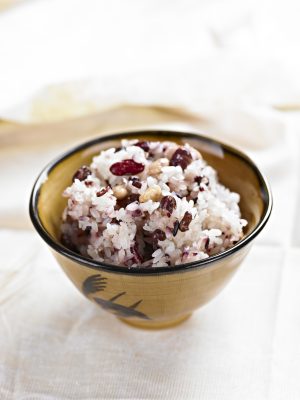
Rice cooked with Bean.
Fiber: The Key Player in Blood Sugar Control
The role of fiber, particularly in the context of diabetes management, cannot be overstated. Fiber is a type of carbohydrate that the body cannot digest. While most carbohydrates break down into sugar molecules, fiber remains undigested as it passes through the digestive system, contributing to a feeling of fullness without adding to the overall blood sugar levels.
Now there are two types of fiber: soluble and insoluble. Both play crucial roles in our body's overall health, but soluble fiber is especially beneficial for diabetes. When soluble fiber enters the digestive system, it absorbs water and forms a gel-like substance. This process slows down the digestion and consequently the absorption of sugar into the bloodstream. As a result, blood sugar levels rise more slowly and steadily, preventing the dangerous spikes that can occur after meals.
When we consider beans they are a rich source of this beneficial soluble fiber. Thus, when beans are consumed with rice the fiber from the beans effectively slows down the digestion of the rice. This, in turn, slows the rate at which the carbohydrates from the rice are converted into glucose thereby moderating the post-meal blood sugar spike. Furthermore the combination of beans and rice provides a complete protein. Rice, while low in the essential amino acid lysine, is high in methionine. Beans, conversely, are high in lysine but low in methionine.
When eaten together they complement each other, providing all the necessary amino acids for our body which is particularly beneficial for those following a plant-based diet. Insoluble fiber, too, has a role in managing diabetes. A diet rich in insoluble fiber has been associated with reduced insulin resistance. This is likely because insoluble fiber, while it doesn't interact with the glucose in your food, can make your body more responsive to insulin the hormone that ushers glucose into cells.
Conclusion
In the quest for optimal dietary habits for diabetes management the combination of beans and rice provides a compelling case study. The symbiotic nutritional relationship of these two foods which have been dietary staples in various cultures for centuries, underscores the importance of understanding food interactions.
Despite their individual shortcomings or strengths, when combined, beans and rice can contribute to a balanced and sustainable diabetic-friendly diet. As always, moderation is crucial, as is maintaining a varied diet to ensure all nutritional needs are met.
FAQs
1. Are all types of beans good for a diabetic diet?
When it comes to managing diabetes through diet, not all beans are created equal. Though they all offer benefits, some are more advantageous than others. Beans are a fantastic source of dietary fiber and protein. They are also rich in various vitamins and minerals, making them a nutritious addition to any diet. Black beans, for example, are high in both protein and fiber which can help manage blood sugar levels.
They contain approximately 15 grams of protein and fiber per cup, contributing to feelings of fullness and potentially aiding weight management — an important aspect of diabetes control.
On the other hand, lentils, whether green or red, are exceptional for diabetics due to their low glycemic index. This means they provide a slow, steady release of glucose into the bloodstream, helping to maintain more consistent blood sugar levels. Additionally, lentils are packed with important nutrients, including iron and folate.
Other beans like pinto, kidney, or navy beans can also be beneficial, but it's key to remember that preparation matters. Canned beans, while convenient, often contain added sodium which can contribute to high blood pressure, a common concern in diabetics. Choosing low sodium varieties or rinsing the beans before use can mitigate this issue.
2. What type of rice is best for people with diabetes?
Rice is a staple in many diets across the globe. However, for individuals with diabetes, choosing the right type of rice is vital. The two major types of rice you might consider are white rice and brown rice. White rice has a high glycemic index, meaning it can lead to rapid spikes in blood sugar levels. On the other hand, brown rice has a lower glycemic index, making it a better choice.
The reason behind this is simple: brown rice is a whole grain, containing all parts of the grain — the bran, germ and endosperm. The bran and germ provide fiber which slows down the absorption of carbohydrates, resulting in a slower rise in blood sugar. Moreover, wild rice, though not technically rice but a grass, is also a great choice. It has a similar nutritional profile to brown rice, but with slightly more protein.
3. Can I eat beans and rice at every meal?
While beans and rice can form a healthy part of a diabetes-friendly diet, it's important to stress variety and balance in your meal planning. Consuming beans and rice at every meal might lead to nutrient deficiencies, as you'd miss out on the range of nutrients provided by other food groups.
It's key to incorporate a mix of proteins, fats and carbohydrates from different sources at each meal. This can include lean meats, fish, fruits, vegetables, whole grains and dairy. The specific proportion of each may vary depending on your individual needs and should be discussed with a healthcare provider or dietitian.
4. How can I incorporate beans and rice into my diet?
There are countless ways to incorporate beans and rice into a balanced, diabetes-friendly diet. Beans can be added to salads, soups, or stews, providing a boost of protein and fiber. They can also be mashed and used as a spread on whole grain bread or as a filling in a burrito or wrap. Rice can be used as a base for stir-fries or served alongside grilled meats or vegetables.
Consider pairing brown or wild rice with lean proteins and colorful veggies for a balanced, nutrient-dense meal. Remember the goal is to create a meal that's balanced, with each component serving a purpose. The protein and fiber in the beans will keep you full the rice provides energy and the vegetables deliver essential vitamins and minerals.
5. Are there other foods that are good for diabetes?
There's a whole world of foods out there that can be beneficial for managing diabetes. Lean proteins, like chicken, turkey, fish, eggs, tofu and low-fat dairy products, can help maintain steady blood sugar levels.
Whole grains, like quinoa, barley, oats and whole grain bread or pasta, are also great choices due to their high fiber content and lower glycemic index compared to refined grains. When it comes to fruits and vegetables the more colorful the better.
These provide a plethora of different nutrients and are typically high in fiber and low in calories. Berries, leafy greens, bell peppers, tomatoes and cucumbers are just a few examples. Finally, healthy fats like those found in avocados, nuts, seeds and fatty fish can help support heart health, a crucial consideration for individuals with diabetes.
Remember, everyone's body responds differently to different types of foods. It's important to monitor blood sugar levels before and after meals to understand how different foods affect your diabetes.
About The Author
Meet Dr. Ahmet Ergin a highly skilled and dedicated endocrinologist with a passion for diabetes care. Dr. Ergin earned his medical degree with honors from Marmara University in Istanbul. He completed internal medicine residency and endocrinology fellowship at Cleveland Clinic.
Dr. Ergin is board-certified in Internal Medicine, Endocrinology, Diabetes and Metabolism due to his vast medical expertise. He's a certified diabetes educator, author of "The Ultimate Diabetes Book," and founder of "the SugarMD YouTube channel."
Dr. Ergin offers exceptional diabetes care to his patients in Port Saint Lucie, FL, helping them manage effectively. Disclaimer: These statements have not been evaluated by the Food and Drug Administration. Information on this website isn’t intended to treat, cure or prevent any disease. Discuss with your doctor and do not self-treat.
Written By Dr. Ahmet Ergin
459 total articles
Meet Dr. Ahmet Ergin, a highly skilled and dedicated endocrinologist with a passion for diabetes care. Dr. Ergin earned his medical degree with honors from Marmara University in Istanbul. He completed internal medicine residency and endocrinology fellowship at Cleveland Clinic. Dr. Ergin is board-certified in Internal Medicine, Endocrinology, Diabetes, and Metabolism due to his vast medical expertise. He's a certified diabetes educator, author of “The Ultimate Diabetes Book,” and founder of “the SugarMD YouTube channel.” Dr. Ergin offers exceptional diabetes care to his patients in Port Saint Lucie, FL, helping them manage effectively. For a closer look into his insights and experiences, connect with Dr. Ahmet Ergin on LinkedIn, Instagram, and YouTube.”
Disclaimer: These statements have not been evaluated by the Food and Drug Administration. Information on this website isn't intended to treat, cure or prevent any disease. Discuss with your doctor and do not self-treat.
Products





